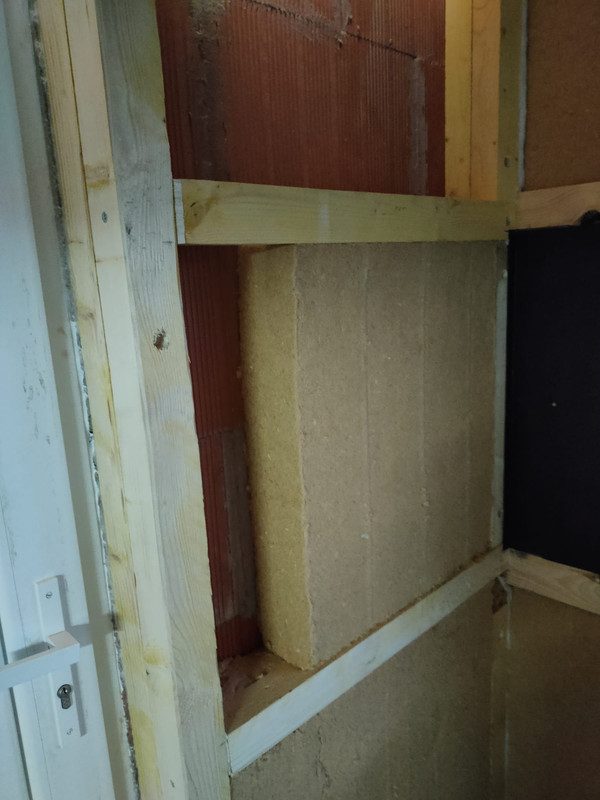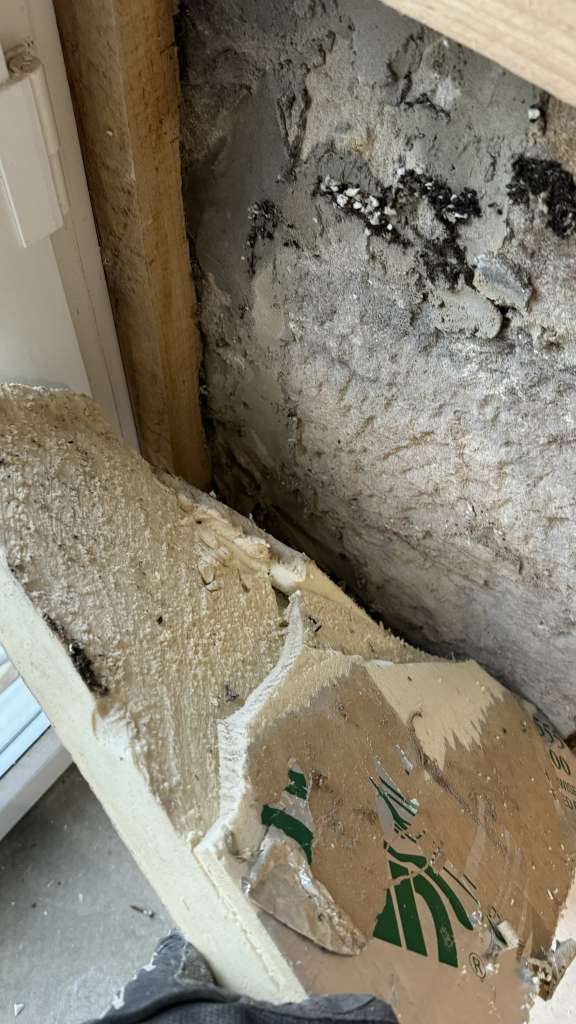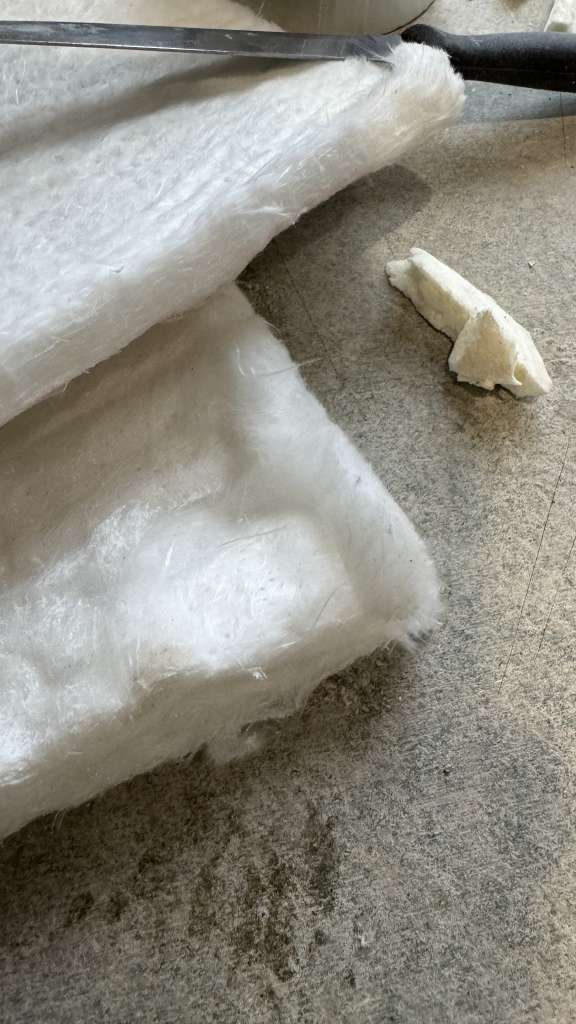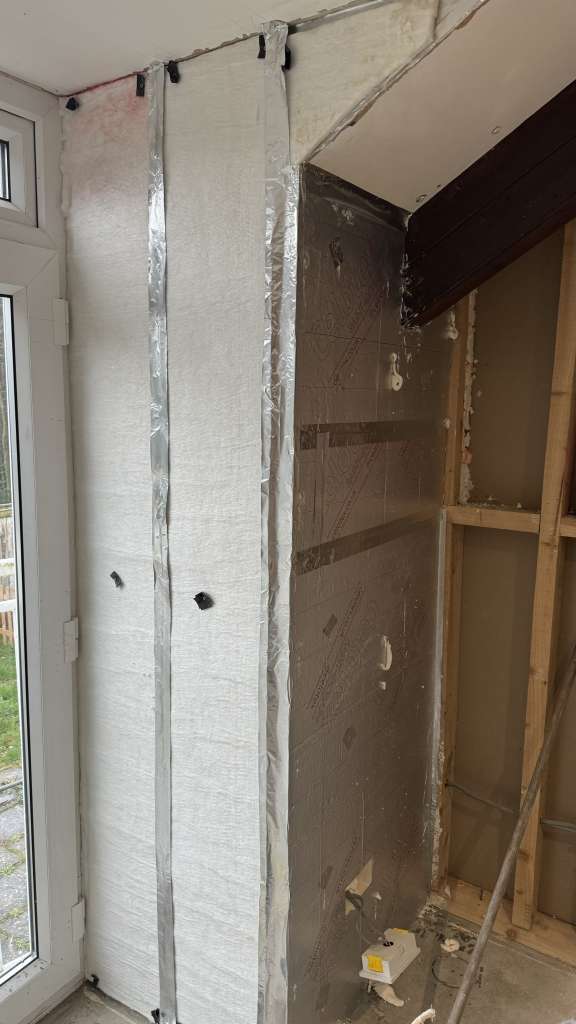![]() You don't need to be an 'investor' to invest in Singletrack: 6 days left: 95% of target - Find out more
You don't need to be an 'investor' to invest in Singletrack: 6 days left: 95% of target - Find out more
Finally getting around to adding insulation to the inside walls of the coldest room in my house, but it's a tiny box room and taking away more than a few cm of width is going to cause problems.
Recently upgraded the bathroom, which had the same issue, and found that 10mm XPS tilebacker board with ply wall panels fitted on top have made a massive difference.
What would folk suggest - similar thickness of XPS board with plasterboard, or double the XPS thickness and plaster directly onto it? Or something else?
TIA
Phenolic insulated plasterboard.
Spendy though.
Maybe you know this (having done some already) but be careful with interior insulation, it's easy to cause damp issues if not done properly because the walls can no longer breathe. Depends on many things but it's something to be aware of.
Spendy indeed! What's that stuff like to work with/cut?
Maybe you know this (having done some already) but be careful with interior insulation, it’s easy to cause damp issues if not done properly because the walls can no longer breathe.
Main issue is condensation, I think. It's a cavity wall with plenty of air movement behind it through a well-placed airbrick and well-ventilated loft-space. So I'm not too worried about damp penetration, and will seal up whatever I put on to stop moisture getting behind it.
Very best is aerogel insulation board. And if you thought Phenolic insulated plasterboard was pricey....
Ive had a few goes at this,
1. Thin Poly sheet straight to wall. Made sod ll differnece to the temperature of the room, but the wall was not cold to the touch
2. PIR backed plasterboard. Spendy, but is the easiest way. It has it's own vapout barrier and does work to keep the chill off, but is by no means perfect.
3. Battens on wall, vapour barrier and rockwall. I'd say is probably as good as the PIR back plasterboard and is cheaper
4. A mix of battens, rockwool, membrane and plasterboard and PIR board all screweed together (cheaper than buying the backed plasterboard as one piece) - only real way to make a big difference unless you stop the cold from the outside (external insulation).
left field choice as this is what my entire chalet roof is made of (it's V Big), is foil insulation (superfoil). Despite which some naysayers will say, it does work really well. USe that with some battens on he wall and i'd think you'd feel a big difference.
Superfoil will only achieve it's R value if it has the required airgaps, so not ideal if you are short of space.
Have a look at hot-fiat's contribution to the today's photo thread:
https://singletrackmag.com/forum/topic/todays-photo/page/45/
Jump to page 45, STW linking sends you to page 1.
I know this isn't what's been asked for but...
We had a house that had condensation and mould in a couple of rooms. We paid to have passive vents installed plus the plaster hacked off half way up the wall in one room and then a membrane applied which was re-plastered over.
Not only has the condensation gone away, the room is a lot warmer.
@Ewan are unicorns or angel's tears involved in the production of aerogel board?
Thanks all, there's no major mould issue right now, just a very chilly room with potential for condensation now the bathroom is better insulated. I've decided to go for a two stage approach, 12.5mm of XPS board to start with. If that does enough, I'll plaster on top, if not, I'll add a thin layer of insulated plasterboard.
I had a similar situation with a small bathroom in our house. Went for 27mm total thickness PIR insulated plasterboard dot and dabbed. Made a huge difference for minimal thickness increase from previous plaster.
@Edukator We’re going to sling another 50mm of PIR-backed plasterboard on top of what is there now which will give us 100mm effective. Still not enough I reckon in our money pit, (170 year old stone barn conversion, converted 20 years ago by a total imbecile).
Currently the walls and ceiling have infinitely more insulation than the sloped bit of the inside walls, which go plasterboard>10mm pine cladding>60mm air gap>the roof. The only thing that will fix that is a new warm roof, which I think is going to be filled with TLX gold or the breathable SF40.
Maybe you know this (having done some already) but be careful with interior insulation, it’s easy to cause damp issues if not done properly because the walls can no longer breathe. Depends on many things but it’s something to be aware
this is a common statement for wall insulation.
I suppose there are a few sources of potential moisture build up:
1. Moisture from the inside of the house may no longer be able to escape through the wall
2. Moisture from outside may seep deeper into the, now, colder wall and emerge on the hidden former inside wall
3. the, now, colder and potentially drier wall may allow for more moisture to rise up from the ground
Others?
IDK whether these guesses make sense and are real possibilities. It’d be interesting to hear what the reality is. And how different house construction types might be affected
Like the OP our bathrooms are lined with that foam-filled concrete-mesh-faced backer board (aquaboard?). With extractor fans, occasionally an open window, they seem to do fairly well moisture-wise. The solid Victorian walls on the outside seem unaffected.
a few years ago we had a couple of bedrooms upstairs have their external walls insulated with ~50mm insulation board. Rooms are more consistent in temperature, take less to heat, and are less damp-feeling.
The other one to consider is interstitial condensation, which is a bugger because you can't see it. This is where adding insulation means that the thermal gradient from the warm side to the cold side is such that the dew point is within the wall. You want to avoid that!
Here is a calculator: https://vesma.com/tutorial/uvalue01/uvalue01.htm
I think you'll feel an enormous difference hot-fiat, you're visibly doing it thoroughly.
As for condensation and dew point issues, I've had none. I've used wood fibre, polyester wool, rock wool, polyurethane panels and multi-layer stuff. Some of those incorporate a membrane and where they haven't I've used a vapour barrier or vapour resistant finish. Each time I've stripped a bit off to get at electrics, plumbing etc., it's been dry and exactly as when fitted years before. Just one exception, a cm or so of mould at a thermal bridge where an inside partition wall meets an outside wall in the bathroom, the moisture was getting though the plaster on the partition wall, a waterproof paint on the plaster cured that.
In terms of thickness of what I've done:
120mm of wood fibre + 20mm wood = 140mm for R3.4 (add R1.2 for the insulating bricks and the wall is R4.6)
100mm woodfibre/rockwool/cotton-lin-hemp/polyesterwool + 20mm wood = R 2.8
66mm polyurethane + plasterboard = 76mm for R3.2
60mm 27 layer multi film including air gaps + 2omm wood = 80mm for R3.4
The last one is the most controversial but it says R3.2 on the spec and works pretty well, the problem is the edges which are more of a thermal bridge than other materials.
In answer to the original question I reckon that 100mm of poyurethane which gives R4.5 like hot-fiat is doing is the best bang for your mm in a UK build. In France fighting the heat is as important as fighting the cold so thermal inertia is as important as thermal resistance to me.
For reference a typical UK cavity wall with poystyrene beads in the cavity is R1.5 = no where near enough.
I used Marmox board in various thicknesses. Glued and plastic nailed to the existing plaster. Walls are 18' inch solid stone.
Word of warning though. If you need to up the thermal r value for an EPC, there is a minimum thickness*. Our internal insulation at between 15 to 20 mm does not count and the wall is logged as an uninsulated solid wall. Good bye grant for a heat pump.
*This may have changed as the work was done in 2016.
I am a tech sales advisor for wood fibre insulation company. Standard advice depending on current construction would be for 40mm of wood fibre board adhered to the walls with a lime based mortar, finished internally with a lime plaster.
Be careful of any air gaps between the insulation and the wall, including dot &dab.
Attention to details dealing with finishing around the insulation is really important.
Check out the Pebble Trust Guide to Sustainable Installation. Free download.
40mm of wood fibre is about R1, that's woefully inadequate IMO. Even when added to an insulated cavity wall you only get R2.5 total and on a solid wall you get R1 and a bit.
On new builds in France 100mm, 120mm 140mm or 200mm thicknesses of wood fibre are used depending on the type of wall being insulated and the climatic zone.
Here's 120mm going in with polyester wool to fill any gaps:

Some dimwit decided to not reduce the width of the dormer, but instead to gnaw away at the kingspan to make it fit. So what was 50mm, was fitted as 25mm. Ffs.

Sorry for the slight hijack, but there seem to be some experts on here, and I have a question they might be able to help with.
We live in a Victorian half timbered house that needs insulation sorting as it only has loft insulation currently. Construction is, I believe solid red brick lime mortared (35cm thick) no cavity, ground floor. Half timbered upper floor, exterior upper is hung with tiles, then inside the frame is bitumen paper then lathe and plaster for the internal finish. It gets fairly cold as there is no insulation and the wind passes through the exterior hung tiles.
I don't believe exterior insulation is going to be possible due to decorative overhanging eaves and I understand the tiles need air circulating front and back to allow them to dry when they get wet from rain. I think the solution is to remove the lathe and plaster internally and fit breathable (wood fibre or similar) to the inside wooden frame then lime plaster back over the top? However I've been reading about how important it is to get right and read all the horror stories about damp when you get it wrong. Or perhaps I've got it all wrong and modern celotex and watertight membranes will be fine?
Previous idiot owners have already breached the DPC with a concrete path all the way round the house and an injected chemical DPC to solve the problem, but we'd like to be here for a while and we'd like to do it right
So before I make some horrible mistake, I think I need to pay someone to come and take a look and tell me what the way forward is, but I don't know who to ask, I've had a look for some kind of specialist surveyor but can't find any nearby, but maybe I'm looking for the wrong thing? I'm near Cambridge
Marco - that won’t kill your grant. You need to have a valid EPC with no recommendations for any loft or wall insulation. They shouldn’t recommend wall insulation unless a cavity wall.
Or at least all the BUS applications that we handle don’t. Although OFGEM are an absolute nightmare and continually move goalposts depending on who you talk to!
Different rules in Wales. To bring the house up to the standard for the scheme (at the time) the solution suggested was . . . External insulation and a wind turbine!
Upshot was a new oil boiler and since we only consume around 1000 litres a year it was a no brainer. £5k for the boiler or £12k for the heat pump + external insulation + the turbine. Never happening.
And don't get me started on the location of the ASHP that was needed to comply with the rules. I can hear the neighbours oil boiler (external wall unit) when it fires up, but the ASHP had to on the opposite side of our house so they weren't disturbed by the noise.
I tried to do the right thing, but gave up.
Interesting, I'm pretty certain the BUS scheme is England and Wales.
Just found enough 10mm aerogel online to do the dormer walls for £130. Result!
I was going to sling a membrane over the insulation, before the plasterbaord on the other walls, but If I properly seal the celotex with foil tape, that should count as an impermeable layer in itself to stop interstitial condensation shouldn't it?
Aerogel sheets turned up. It’s quite scary stuff - looks exactly like white asbestos lagging you might find lagging a steam engine. I suited up in a proper mask, gloves, goggles & disposable boiler suit to fit it.
Currently debating what vapour barrier to fit. It’s only 50 cm wide @ 210 cm high. Hardly worth buying a 50m roll of something. I’m seriously tempted to use catering foil reinforced with something as the sealing tape is pretty much that with an adhesive layer.
I’ve used a mixture of Celotex and kingspan in this room. In future I’ll be forking out the extra £2-£3 for kingspan. The aluminium layer on the celotex is really fragile and makes me doubt its impermeable qualities - it’s like it’s been sprayed on. Whereas kingspan seems to have a far more robust actual aluminium sheet bonded to it.

